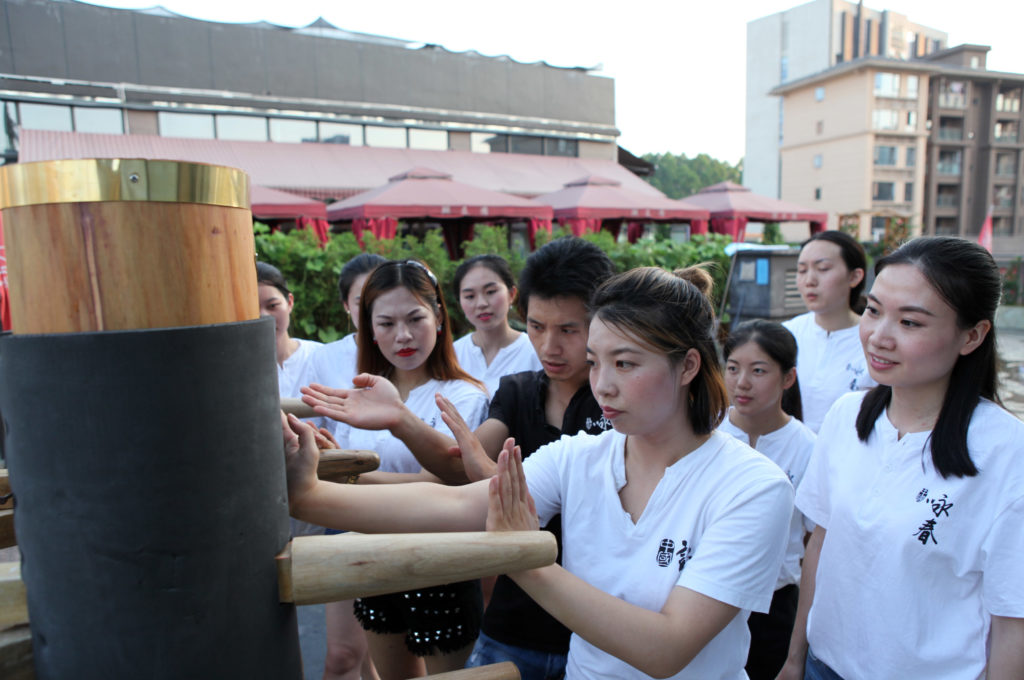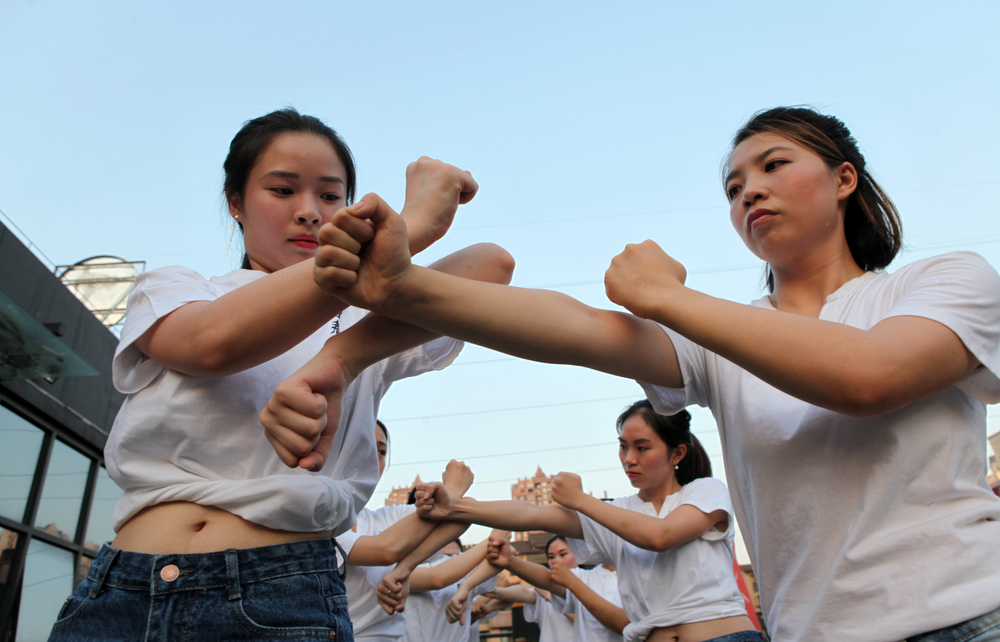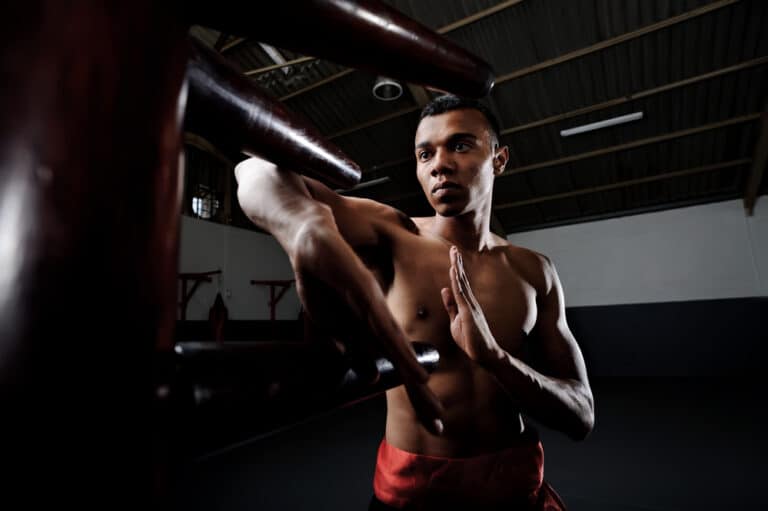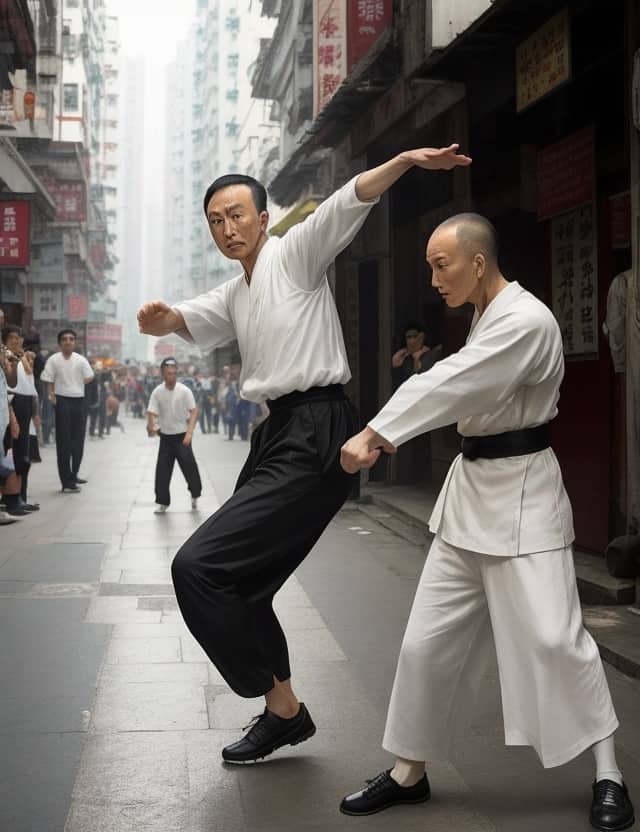What is Ving Tsun Kung Fu and what is the difference between Ving Tsun and Wing Chun?
Where does the name Ving Tsun originate from and what are the components, characteristics and fighting philosophy or Ving Tsun Kung Fu?
What is the Difference between Ving Tsun Kung Fu and Wing chun?
“Ving Tsun” and “Wing Chun” are two terms that are often used interchangeably, but they refer to the same Chinese martial art system.
The difference in spelling is due to variations in transliteration from Chinese characters to the Roman alphabet.
The more Westernized translation of the Chinese characters 詠春 results in the spelling out of the term into English as “Wing Chun”.
And one of the main reasons why Wing Chun is probably the more commonly known spelling is because of Ving Tsun’s introduction in Honk Kong by Ip Man who brought the system from Foshan in Mainland China, Southern China specifically.

As Hong Kong at the time was a British colony and the most common foreign language in Hong Kong was English, 詠春 was spelt out as Wing Chun.
Yip Man opted for the spelling Ving Tsun Kung Fu.
Also because of the “V” like Victory, the term seemed to him to be more appropriate.
And the more traditional Chinese translation of the characters “Ving Tsun”, is actually closer the the Cantonese way of pronouncing the characters.
So, basically, there is no substantial difference between “Ving Tsun” and “Wing Chun”.
Both names refer to the same martial art system from Southern China that was made famous by IP Man and his most famous student Bruce Lee.
Ving Tsun in the west has been spelt in many different ways.
- Ving Tsun
- Wing Chun
- Wing Tsun
This is the result of westerners trying to write a Chinese sound in western language.
In Hong Kong the world Ving Tsun Athletic Association spells the westernised version as Ving Tsun.
Different lineages and schools may have slightly varying interpretations and teaching methods, but the core principles remain consistent.
The Ving Tsun Athletic Association
The Ving Tsun Athletic Association (VTAA) was established in Hong Kong by IP Man in 1968.
The Ving Tsun Athletic Association was the first ever Kung Fu Association recognised by the Honk Kong government.
The fact that the English spelling of ‘Ving Tsun’ was used to name and established the first Ving Tsun Kung Fu association by IP Man himself demonstrates which version of the English spelling that Grand Master Ip Man preferred to use when naming the association back in 1968.

Main Characteristics of Ving Tsun
There are several main components or characteristics of Ving Tsun that make this Southern Chinese Kung Fu style very unique and instantly recognizable.
Efficiency and Economy of Motion:
Ving Tsun emphasizes direct, efficient, and practical techniques, designed to neutralize an opponent’s attacks quickly and effectively.
Movements are simple, compact, and streamlined, minimizing wasted energy and unnecessary motions.
Centerline Theory:
A core principle of Ving Tsun is the centerline theory, which involves controlling and attacking the centerline of an opponent’s body.
This concept allows practitioners to dominate the most direct path between themselves and their opponent, maximizing their offensive and defensive capabilities.
Simultaneous Attack and Defense:
Ving Tsun promotes the concept of attacking and defending simultaneously.
Techniques are often designed to intercept an opponent’s attack while launching a counterattack in a single fluid motion, reducing the opponent’s ability to react.

Close-Range Combat:
Ving Tsun specializes in close-quarters combat, where techniques are optimized for short distances.
This is particularly useful in self-defense situations and confined spaces.
Chain Punching:
Ving Tsun is known for its rapid and powerful chain punches, delivered in quick succession to overwhelm an opponent’s defenses.
Structure and Body Alignment:
Proper body structure and alignment are crucial in Ving Tsun to generate power and maintain stability while executing techniques.
This includes maintaining a strong stance and using the whole body in harmony.

No Wasted Movement:
Techniques in Ving Tsun are designed to be direct and effective, with minimal unnecessary movements.
This efficiency enables practitioners to respond rapidly and effectively to changing situations.
Adaptability:
Ving Tsun techniques are not rigid or fixed; they are adaptable to different situations, body types, and opponents.
The focus is on principles rather than memorized patterns.
Practical Self-Defense:
Ving Tsun is often taught with a practical self-defense approach, focusing on techniques that can be applied effectively in real-life situations.
Unique Training Methods
Some of the well known and recognized training methods of Ving Tsun are quite unique and not really used in other systems of Kung Fu or other martial arts.
Chi Sao (Sticky Hands):
Chi Sao, also known as Sticky Hands, is a fundamental training practice in Wing Chun (Ving Tsun) that focuses on sensitivity, coordination, reflexes, and adaptability.
Ving Tsun chi sao drills involve two practitioners engaging in controlled, close-range contact while performing a variety of techniques and movements.
The primary purpose of Chi Sao is to develop a deep understanding of the principles and concepts of Wing Chun in a dynamic and interactive manner.
When practicing chi sao maintaining contact with an opponent’s arms while practicing various hand techniques and changes are key to develop sensitivity.
While maintaining contact, practitioners exchange various hand techniques, such as punches, strikes, blocks, and traps.
Chi Sao allows practitioners to practice both offensive and defensive techniques while adjusting to their partner’s movements.
The concept of controlling the centerline is a core principle of Wing Chun.
In Chi Sao, practitioners aim to maintain control over their partner’s centerline while disrupting their opponent’s attempts to do the same.
Wooden Dummy (Mook Jong):
The wooden dummy is a training tool used in Ving Tsun to practice techniques and develop proper body positioning and structure.
The dummy has arms and a central post that represent an opponent’s limbs and body.
Practitioners perform techniques on the dummy to improve accuracy, power, and control.

The purpose of Wooden Dummy training is to bridge the gap between solo forms and real-life combat situations, allowing practitioners to hone their skills and develop muscle memory in a controlled and structured manner.
Unlike the punching bag in boxing and muay thai, the wooden dummy is not primarily for striking power.
The focus in stead includes footwork, positioning, transitional flow, precision, timing as well as power in techniques.
Ving Tsun Forms
Ving Tsun (Wing Chun) features a series of forms, which are choreographed sequences of movements that encapsulate the techniques, principles, and concepts of the martial art.
Practicing these forms helps students develop proper body mechanics, muscle memory, and an understanding of Ving Tsun’s unique combat philosophy.
While the exact forms and their variations can differ among lineages and schools, here are some of the most commonly practiced forms in Ving Tsun:
Siu Nim Tao (Little Idea Form):
Siu Nim Tao is often the first form taught in Ving Tsun and serves as the foundation of the system.
It emphasizes fundamental principles, such as the centerline theory, relaxation, structure, and basic hand techniques.
The form is performed slowly and deliberately, focusing on precise movements and proper body alignment.
Chum Kiu (Seeking the Bridge Form):
Chum Kiu introduces more advanced footwork, weight shifting, and coordination.
It emphasizes moving while maintaining balance and controlling an opponent’s bridge (the line connecting their arms).
Chum Kiu builds on the principles learned in Siu Nim Tao and prepares students for close-quarters combat.
Biu Tze (Thrusting Fingers Form):
Biu Tze is an advanced form that teaches techniques for recovering from compromised positions, launching powerful attacks, and utilizing short-range techniques.
It includes techniques for striking, elbowing, and finger thrusting. Biu Tze is known for its explosive and dynamic movements.
Mook Yan Jong (Wooden Dummy Form):
The Wooden Dummy form is practiced on a wooden dummy apparatus equipped with three arms and a central post.
This form focuses on developing techniques, structure, power generation, and footwork.
Practitioners perform techniques against the dummy’s arms to simulate real combat scenarios.
Luk Dim Boon Gwun (Six-and-a-Half Point Pole Form):
This form teaches the use of the long pole as a weapon. It emphasizes power generation, leverage, and extension.
The pole form helps practitioners develop strength, coordination, and understanding of how to apply Wing Chun principles with a weapon.
Baat Jaam Dao (Eight-Cut Sword Form):
The sword form teaches the use of the Baat Jaam Dao, or Wing Chun butterfly swords.
It emphasizes quick and fluid strikes, footwork, and simultaneous defense and offense.



